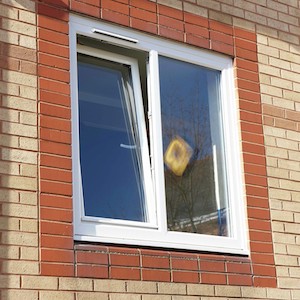A Window in the Door: More than Just a Pane of Glass
At first glimpse, a window in a door might seem like an easy architectural function. It's just a piece of glass that permits light to filter through or provides a glimpse of what's on the other side, right? However when you pause to consider it, this seemingly mundane element carries significant functional, aesthetic, and even symbolic weight. Whether it graces the doors of your home, office, or favorite café, a window in a door is even more than simply a pane of glass-- it's a bridge between areas.
1. Functionality: The Practical Role of Door Windows
The addition of a window to a door offers practical benefits that can boost both domestic and business areas:
Natural Light: One of the main functions of a window in a door is to allow sunlight to travel through. In simply click the next site with minimal windows or enclosed locations like corridors or interior workplaces, this function can brighten the space, reduce the dependence on artificial lighting, and develop a more welcoming environment.
Presence and Safety: A window in a door provides a clear line of vision for those on either side. This is specifically important in business and industrial settings, such as dining establishments, factories, or schools, where individuals frequently move through doors. Presence lowers the risk of mishaps (e.g., someone walking into a door or clashing with someone on the other side).
Ventilation and Energy Efficiency: When matched with operable glass or modern innovations like double-glazing and low-E glass, door windows can add to much better air blood circulation and energy efficiency in your house or work space.

Security: While breaking glass might appear like an open invitation to intruders, modern styles have actually resolved this problem. Reinforced glass, tempered glass, or designs with narrow panes can make the window resistant to break-in while still satisfying of exposure and light.
2. Visual Appeal: Enhancing the Visual Identity of a Space
From a design viewpoint, windows in doors can elevate visual appeal in many methods:
Style and Character: The style of the window often matches the architectural vibe of the home. A home with a rustic or farmhouse appearance may feature a door with frosted or stained glass, while a streamlined, modern-day home might display a minimalist door with basic, clean lines.
Modification: Door windows can be found in various sizes and shapes-- round, rectangle-shaped, oval, arched, or custom-made to match your preferences. This flexibility provides homeowners and designers the ability to create doors with creative flair and personal touches.
Curb Appeal: The entry door is often the focal point of a home's exterior, and a well-designed window within it can turn an otherwise normal door into a bold design declaration. Frosted or etched glass, for circumstances, can convey sophistication and elegance.
3. Significance and Meaning: Beyond the Practical and Aesthetic
On a deeper level, a window in a door brings symbolic significances that resonate throughout cultures and contexts:
Openness and Connection: A door with a window cultivates a sense of connection between two discrete areas. Whether it's between a home and its front lawn or a workplace conference room and a corridor, the window can make these areas feel less isolated and more integrated.
Transparency: In workplaces, doors with windows signify openness and accountability. A manager's office with a glass-panel door, for example, can signify approachability, minimizing the hierarchical barrier that a solid closed door may develop.
A Threshold of Opportunity: Metaphorically speaking, a door with a window can represent a view into new chances. It uses a sneak peek into what lies ahead-- a fitting image for individual development and expedition.
4. Modern Trends: Innovations in Door Window Design
Advances in innovation and style are continuously improving how we consider door windows. Here are a few trends to enjoy:
Smart Glass: With the advent of wise innovation, windows that can alter from transparent to opaque with the touch of a button are gaining appeal. These modern choices provide personal privacy on need without sacrificing the benefits of natural light.
Energy Efficiency: Double- and triple-glazed door windows with advanced insulation are ending up being requirement in energy-conscious homes. These not only keep your energy expenses in check however also reduce ecological effect.
Decorative Enhancements: Patterns, etching, and colored glass inserts are becoming more complex, using homeowners limitless possibilities to personalize their doors.
Safety Upgrades: Impact-resistant glass and shatter-proof films are increasingly being incorporated into door windows, especially in locations susceptible to storms or high-security needs.
5. Considerations for Choosing a Door with a Window
Before choosing on a door with a built-in window, there are a few factors homeowners and designers ought to keep in mind:
Personal privacy: While a window offers exposure and natural light, it can also jeopardize personal privacy. Frosted glass or tactically put window designs can alleviate this issue.
window and door replacement : Glass in doors will collect fingerprints, dirt, and smudges, particularly in high-traffic areas. Going with products that are simple to clean or have protective coverings can conserve time.
Combination with the Environment: Choose a door window style that matches the surroundings. A door in a peaceful, residential area might prioritize aesthetics, while one in a business building may emphasize resilience and security.
Conclusion: A Small Feature with Significant Impact
As simple as it may seem, a window in a door is a feature that mixes usefulness with charm, safety with style, and connection with individuality. It's a reminder that the smallest details in architecture can have the power to change not just our areas but likewise the method we connect with them.
Whether you're peering through a glass panel to welcome a guest or letting natural light filter into your home, a window in a door is a lot more than a style aspect-- it's a way to open ourselves to the world, one pane of glass at a time.
